As a native of Kalamazoo, Michigan, Titus Kaphar never dreamed that he would be creating some of the world’s most thought-provoking art.
School wasn’t something the Yale graduate took seriously early on, pointing out that he once held a GPA of 0.65. He only took an interest in art as a way to impress the girl that he had a crush on. That girl would later become his wife.
Titus enrolled in a few art classes at a junior college as a way to get her attention. As he would see images on the screen or in his books, it would awaken in him something that he never felt before. It would cause him to think deeper, to try and understand the meaning behind the various works.
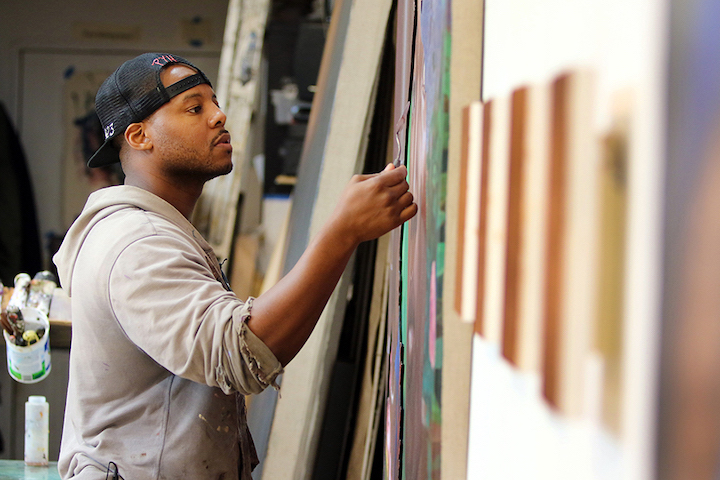
“For the first time in my life, I was forced to understand something through a visual understanding,” Titus said. “My brain needs images. It calibrates things through images. I got a ‘B’ in that class. It was like a revolution for me.”
After getting his grades up, he decided to enroll in the state university. During a survey art history class, a teacher decided to skip over the one chapter that actually addressed Black people in art.
“In a 400-page book, there were only 14-pages that represented Black people. I was excited to see people who looked like me. But the day we were set to start it, my teacher decided to skip the entire chapter.”
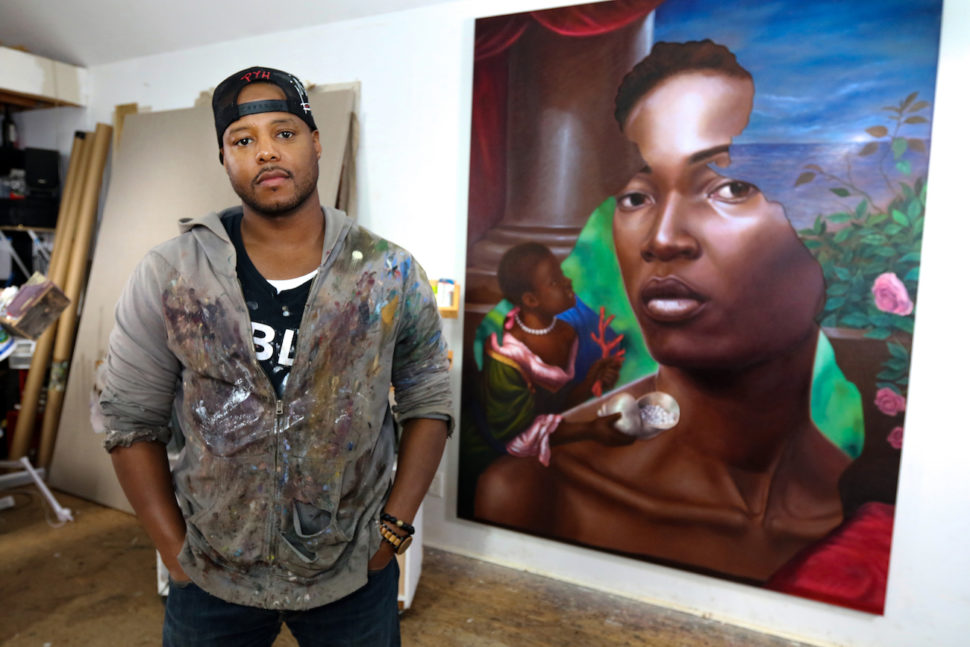
This sparked something in Titus. After complaining to his professor and even the dean with no recourse, he realized in that moment that he would have to search out the knowledge on his own and rewrite history in his own way.
He took the time and painted every Black character in that chapter on dry erase boards. This was the official start of Titus’s unique art form.
“I took the original paintings, in the same compositional scale, and removed everything except the Black character. I wanted the viewer to contemplate the life, the dreams, the thoughts, the fears, the hopes of that minor Black character. As the artist, I have the power to direct your eyes in the painting. I know where you’re going to focus when you view a painting.”
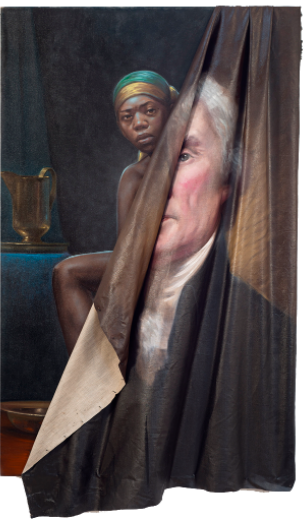
After reading more and digging into paintings that were created to tell the stories of significant moments in history, Titus realized that the Black characters were always thrown in as a “shadow” within the painting.
This didn’t sit well with him, knowing that those Black characters likely played more of a significant role than the artist would have us to believe.
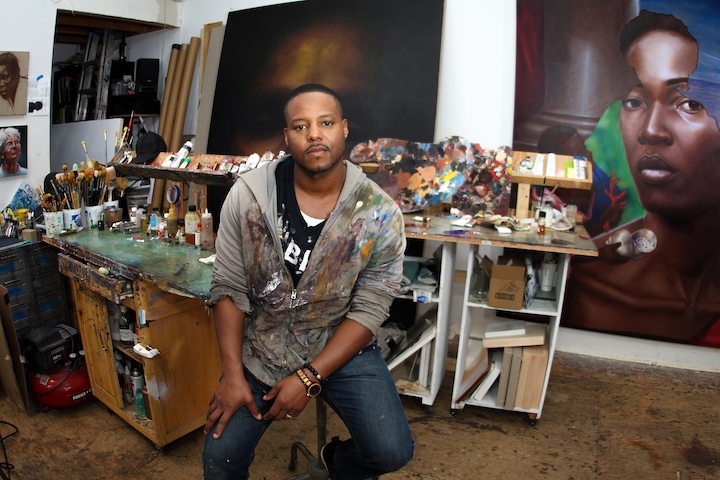
Titus started taking his own interpretations of these moments and creating and then manipulating the art to tell the story and allow the Black character to now be the talking point. He would do anything from shredding to even crushing the painting to tell the story in a way that he felt was important.
One painting that truly inspired him was that of a white soldier being held by a black soldier, likely his slave, during the American Revolution. You can clearly see the white soldier, dressed in white and standing out as a focal point, while the Black soldier is tucked away in the corner which would cause you to glance over him.
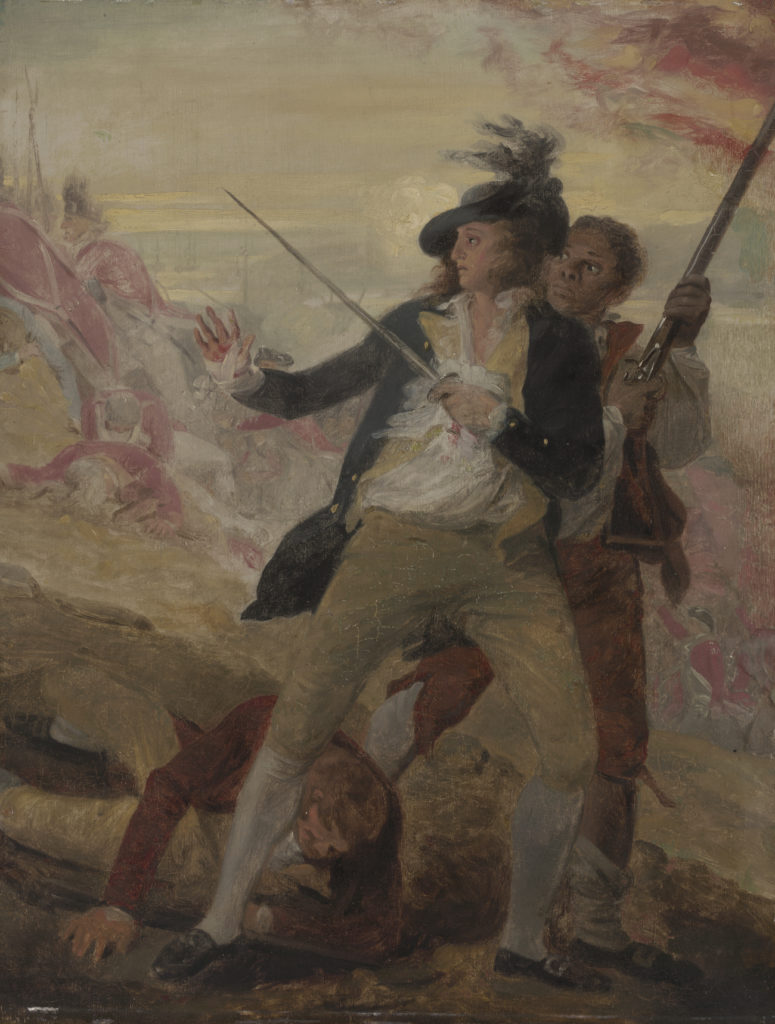
“People began getting offended by the fact that I was manipulating these historical documents. But these are technically not historical documents. Many of these moments did not happen the way that they have been portrayed. They were only intended to inspire ideas, hopes, and passions for the country. So now when I approach a painting, I feel completely free to manipulate it and change it,” Titus explained.
Once he reached this moment of freedom, it allowed him to set out to create things that really got the world talking.
Related: This Black Artist Is Addressing Mental Health Through Her Hand-Painted Creations
A standout moment for Titus was when he was commissioned by TIME Magazine to create a piece around the Ferguson protests. Although hesitant, Titus delivered. However, the inspiration behind the piece was more personal than many would know.
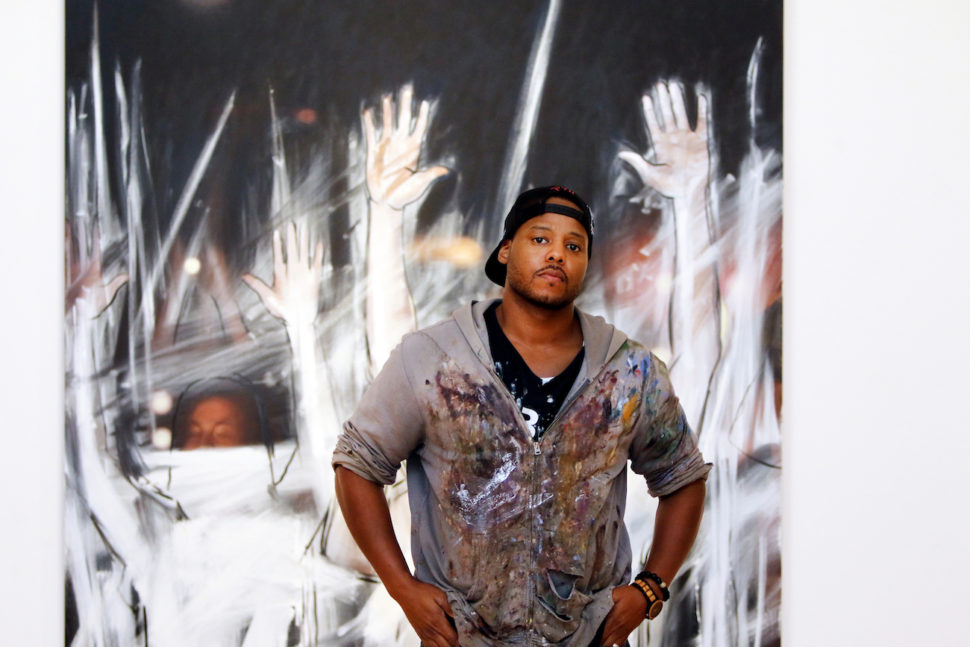
Titus and his younger brother were out exploring some of the art galleries in the Chelsea neighborhood in New York, where he had an exhibit on display. He was suddenly stopped by police and accused of stealing art from the exhibit in which he had created. It was a pivotal moment for Titus.
He would then introduce the world to the ‘Jerome project.’ This series of paintings were inspired by his father, Jerome. After googling his father’s name he came across his mugshot, along with dozens of other black men by the same name. He created these pieces by painting the men’s faces and then using tar to cover them based on the number of years they spent behind bars. The most real of them all are those who died in prison, with their faces being completely covered.
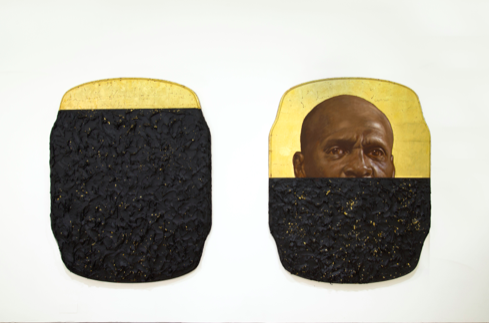
His latest piece is an original sculpture forThe American Revolution Museum in Yorktown, Virginia. It is apart of their “Forgotten Soldier” exhibit which aims to highlight the contributions of the Black men and women who were forgotten in history for their significant contributions to the American Revolution.
When he is not creating new pieces for museums or exhibits around the world, you can find Titus in his studio located in New Haven, Connecticut.
You can find more on Titus Kaphar via his website: www.kapharstudio.com.




